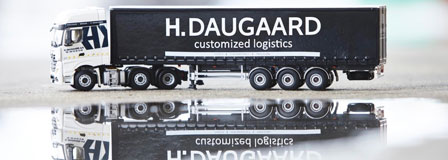13-06-2023
The development of more sustainable initiatives in the transport industry is constantly evolving. We keep up with new developments and are always open to trying and testing new initiatives that make sense for our business. This is why we’ve installed solar panels on the roof of two of our trucks.
Long trips often require the driver to make several overnight stays in the truck. Maybe the driver has to wait a day in northern Sweden so the truck can be loaded, and the driver can return with a full load instead of driving with an empty trailer. On long trips like these, the trucks are the drivers’ temporary homes. It’s where they sleep, watch TV, make food and coffee, and charge their phones and computers.
As in any other household, electricity is needed to run the fridge, TV, heater, and coffee machine. Truck drivers are often reprimanded for engine idling at rest areas, but this is often a necessity to keep their temporary homes powered.
Solar cells replace engine idling
With solar cells installed on the roof of the trucks, this is no longer an issue. The solar cells supply the trucks with electricity both while driving and while parked, eliminating the need to keep the engines running in order to generate power.
This is a relief for the drivers who no longer have to worry about idling and, not least, good for the environment as trucks don’t have to use unnecessary fuel while idling.
Solar cells on the roof are an excellent way to reduce our CO2 consumption when our drivers go on long trips.

Not all solar cells are made the same
Our solar cells are supplied by the company Green Energy/MIPV.pro, specialized in the manufacturing of solar cells for mobile units, such as cars, boats, mobile homes, and trailers. For vehicles, it isn’t possible to use conventional solar cells, such as those typically found on houses and in solar parks.
This is because solar cells for houses make use of a good low-cost technology called crystalline solar cells. These types of solar cells are suitable for stationary use, but not for cars or other mobile vehicles or vessels. The solar cells are very fragile and even the slightest vibrations will result in microcracks.
While flexible crystalline solar cells are available on the market, they should be used with caution. Although they can tolerate bending, they’re still vulnerable to microcracks that are invisible to the naked eye. Over time, the small fractures can become a fire hazard as the electrons accumulate and generate so much heat that the back of the solar cells can catch fire.
The solar cells used on our trucks are called CIGS, which is short for copper, indium, gallium, and selenide. The CIGS material is deposited on a small stainless-steel plate, which is then attached to several smaller plates to form a larger solar panel. These types of solar cells are very robust and can withstand shocks, pressures, and even being run over by a car.
Satisfied drivers
By installing solar panels on our trucks, we’re able to maintain power on the vehicles without idling, reducing both our fuel consumption and CO2 emissions. Our drivers can now use all facilities in the vehicle with a clear conscience.
At H. Daugaard, we’re always looking for solutions that can contribute to more sustainable transport. This is why we’re testing solar cells on several of our trucks to see how they work in practice for our drivers. So far, we’re getting positive feedback.
Do you need some advice on a more eco-friendly transport?


